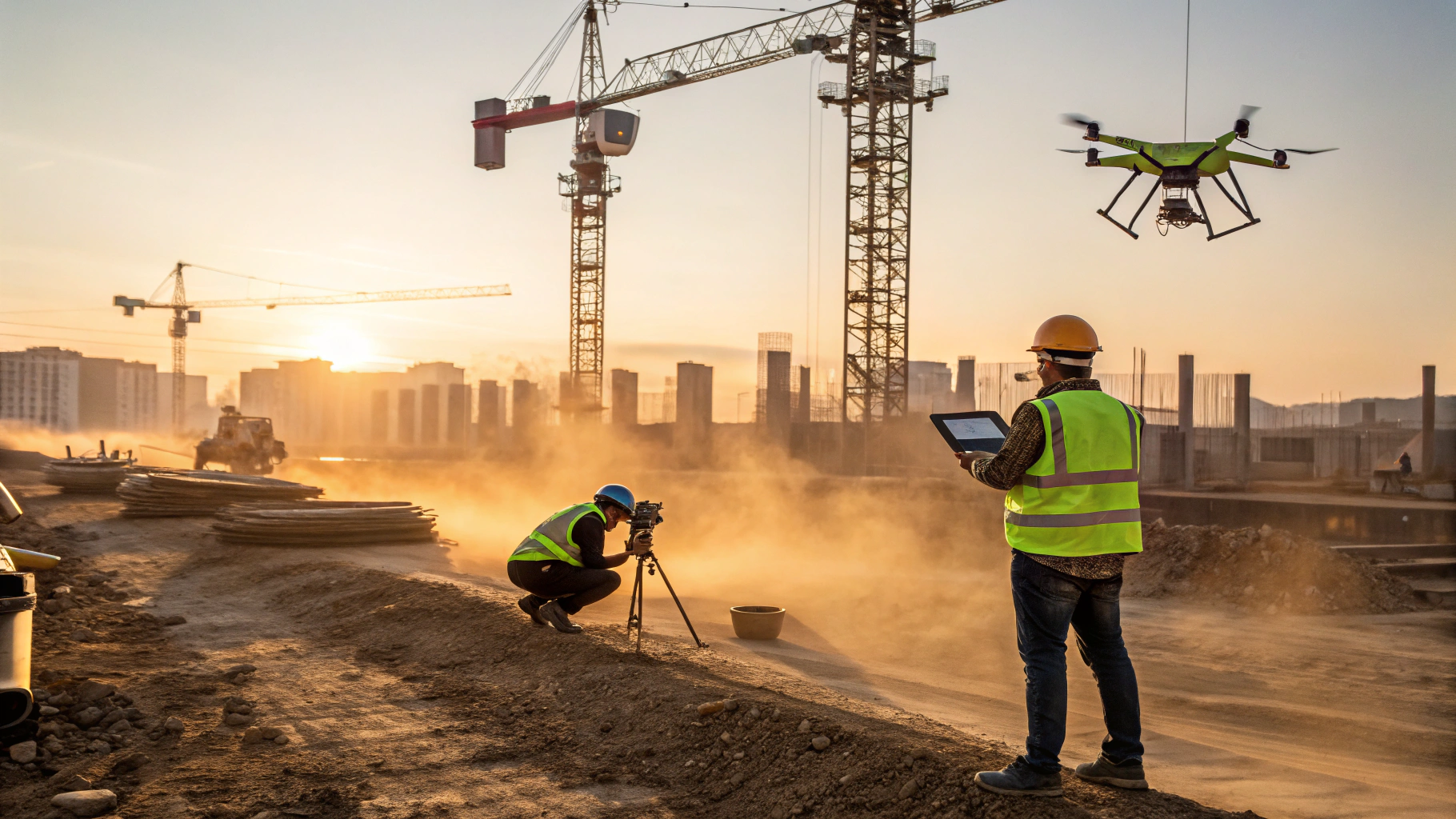Construction sites are inherently dangerous places where workers face life-threatening risks every single day. With the industry accounting for 20% of all U.S. workplace fatalities and OSHA’s “Focus Four” hazards, their term for the four leading causes of deaths (falls, struck-by incidents, electrocutions, and caught-in accidents), contributing to 65% of construction fatalities 12. These aren't just numbers on a page. Behind every statistic is a worker who didn't make it home to their family. That's why following construction safety protocols is literally about staying alive and protecting the people working alongside you. Let’s dive in.
Priority #1: Master the Focus Four Hazards
Understanding and addressing these top risks forms the foundation of construction site safety.
Falls From Height
Falls cause 39% of fatalities, often from heights between 6 and 30 feet. Reduce risks by installing guardrails on elevated platforms, inspecting harnesses daily, and using safety nets for roofs or unstable surfaces. A fall from just 10 feet hits the ground at 25 mph (faster than a sprint) making prevention non-negotiable 21.

 Struck-by Incidents
Struck-by Incidents
Heavy machinery and flying debris account for 15-17% of deaths. Stay safe by marking designated pedestrian zones with bright tape, wearing high-visibility vests, and positioning barriers near crane operation areas.
 Electrocutions
Electrocutions
Live wires and damaged tools lead to 7-8% of fatalities. Act defensively: treat all electrical components as energized, maintain a 10-foot distance from power lines, and use outlets with built-in circuit breakers (GFCI) 21.
Caught-In/Between Accidents
Trench collapses and machinery pinch points cause 5-6% of deaths. Prevent entrapment by sloping trench walls at safe angles and using lockout/tagout procedures (equipment shutdown protocols) during repairs 71.
Navigate Updated Safety Regulations
OSHA’s 2025 proposals tighten protections, prioritizing worker-specific safeguards.
Fall Protection
Guardrails and harness systems are mandatory for work above 6 feet. Employers must document monthly equipment checks or face fines exceeding $80,000 per violation 910.
PPE Fit Matters
Ill-fitting gear sidelines safety, only 60-72% of workers use PPE consistently. A proposed OSHA rule may soon require companies to provide adjustable helmets and respirators tailored to each worker’s size 1112.
 Heat Illness Prevention
Heat Illness Prevention
New guidelines target heat index (temperature + humidity) risks. When the index exceeds 80°F, sites must offer shaded rest areas, electrolyte drinks, and 15-minute acclimatization breaks for new workers 10.
Maximize PPE Effectiveness
PPE cuts injury rates by 1.5 times, but only when used properly.
- Avoid trimming helmet brims or removing goggles as modifications reduce protection. Opt for moisture-wicking fabrics in extreme heat to boost compliance 1415.
- Upgrade to thick-soled boots for nail puncture resistance and Class E hard hats for electrical work.
Transform Training Into Muscle Memory
Workers trained in hazard recognition double their compliance with safety protocols.
A study of 500 crews saw a 35% accident drop after task-specific drills. For example, scaffold teams now practice assembling platforms with precise guardrail spacing, while crane operators rehearse emergency hand signals weekly 1617.

Conduct Life-Saving Site Inspections
Proactive checks catch risks early.
Walkthrough Checklist
-
Test scaffolding connections for loose bolts
-
Ensure trenches have proper sloping or shoring
-
Confirm first aid kits contain tourniquets and burn gel

A Canadian crew slashed incidents by 42% by empowering workers to flag hazards during daily inspections, like spotting a cracked ladder rung managers overlooked 1819.
Adapt to Weather’s Wildcards
Extreme conditions demand quick adjustments.
Heat Waves
Schedule roofing work at dawn, provide cooling vests, and track hydration.
Storms
Secure materials with ratchet straps when winds hit 25 mph. Clear drains hourly to prevent flooding, a Texas crew avoided a trench collapse by unclogging a drain minutes before a downpour 2021.
Build a Speak-Up Safety Culture
Leadership commitment saves lives.
Supervisors trained in safety coaching reduce complacency. One Florida team halted work 23 times last year to fix unstable scaffolding. It’s proof that “stop work” authority drives accountability 2223.
 Use tool box talks to share near-misses. Apps like SafetyTrack let workers anonymously report hazards, slashing resolution time by 50% 2425.
Use tool box talks to share near-misses. Apps like SafetyTrack let workers anonymously report hazards, slashing resolution time by 50% 2425.
Prepare for Emergencies
Every second counts.
First Aid Readiness
Train 10% of your team in CPR since it boosts survival rates by 40%. Stock kits with bleeding control packs and emergency blankets 2627.
 Evacuation Drills
Evacuation Drills
Map alternate exit routes around new equipment. After a California fire, crews escaped safely because bi-monthly drills taught them to avoid blocked pathways.

Leverage Tech as Your Safety Net
Innovations are game-changers.
Wearable Tech
Smartwatches alert supervisors if a worker’s heart rate spikes or they fall. GPS tags ensure lone workers check in hourly 2829.
AI Surveillance
Cameras flag missing hard hats in real time. Drones scan sites daily. A Michigan team spotted a leaning wall before it collapsed, thanks to their 7 AM drone sweep 3029.

Safety Starts With You
Construction safety comes down to two simple realities: cut corners and you invite disaster, but stay prepared and you go home in one piece. It's that straightforward.
Know OSHA's latest requirements inside and out, because they change and those changes matter. And when you spot something dangerous, don't wait around. Use your site's safety app and report it within 24 hours. That small action could save someone's life. "Zero incidents" isn't some corporate buzzword plastered on a banner. It's what we're actually shooting for every single day, on every job site.

